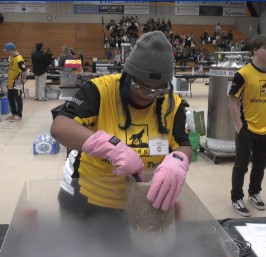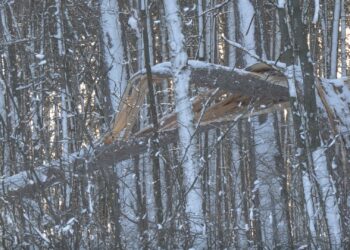HOUGHTON, Mich. (WZMQ) – Michigan Tech’s Mind Trekkers hosted a science and engineering expo today for 6th and 7th graders from across the Western U.P. As part of The One UP Copper Trails Festival, the event gathers together experts from the fields of science, technology, engineering, and math, who perform small experiments to illustrate the many opportunities available in CTE and STEM programs. From playing a piano made of bananas to the effects of liquid nitrogen, each station offered a hands-on exploration of STEM subjects and related career fields. More than 500 students from The Western UP gathered on Tech’s campus to explore various scientific disciplines and associated careers. Cassy Tefft de Munoz, Executive Director of Michigan Tech’s Center for Educational Outreach says this science fair highlights all the potential careers available in the STEM field.
“So the whole idea is that we’re showing students different career pathways and things that they might one day be interested in doing,” said de Munoz.
Students today learn by doing, and that’s in abundance here
“The students are seeing things and that’s what they want to be doing. And so students are really drawn to these types of events and activities where they can explore with their hands and find things that really spark their interest and their curiosity,” said de Munoz.
The festival was staffed by Michigan Tech students, who act as mentors to these budding scientists. For graduate student Maia Newkirk, it’s her way of giving back
“And they really prioritize outreach and stuff like that. So it’s been a ton of fun to be here with buying truckers and show kids science and get them interested as well,” said Newkirk.
The Copper Trails Festival is just one of many such science fairs conducted by Mind Trekkers. Cassy Tefft de Munoz believes learning should be fun and exciting.
“Some of these students may go on into the trades they may go on into college, but the goal today is just to get them excited about something, get them excited about some stem or career pathway that they possibly see for the first time today,” said de Munoz.


















